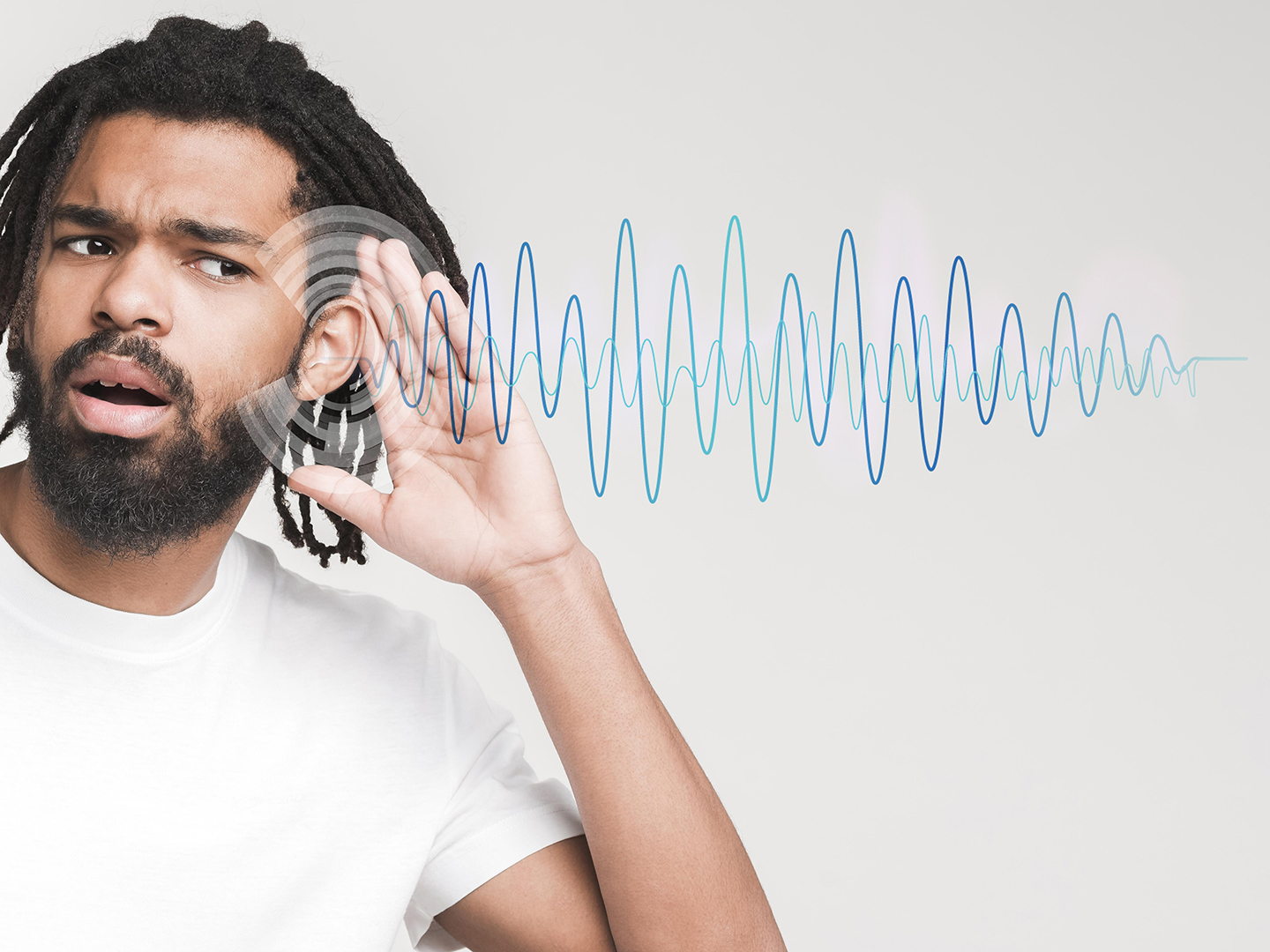
Voice Actors Change Careers Overnight! Dubbing AI Shock Everyone


Voice Actors Change Careers Overnight! Dubbing AI Shock Everyone
Have you ever wanted to sound like someone else or an avatar during calls, gaming, or content creation? Perhaps you've wondered: How can I effectively change my voice without complicated software? The answer may be simpler than you think. In today's digital landscape, Dubbing AI is the answer to voice conversion needs, offering features far beyond traditional PC voice changer applications.
As technology advances at an incredible pace, AI voice technology is becoming increasingly sophisticated. For the past week, I've been exploring Dubbing AI, a cutting-edge AI voice changer software that promises to revolutionize the way we manipulate and transform our vocal content. Is it really the best voice changer it claims to be? Let's take a deep dive into what makes this tool stand out in an increasingly crowded market.
What is Dubbing AI?
Dubbing AI is an advanced voice conversion software powered by artificial intelligence that allows users to modify their own voice in real time or convert pre-recorded audio with amazing accuracy. Unlike traditional voice changers, which often produce mechanical or unnatural results, Dubbing AI leverages sophisticated machine learning algorithms to create realistic-sounding voice transformations that preserve natural speech patterns, intonation, and emotional nuances.
The platform offers an impressive array of features, including gender switching, accent modification, character voice imitation, and more. What particularly caught my attention was its dual functionality - it can be used both as a real-time PC voice changer during live interactions, and as a powerful post-production tool for content creators.

Evolution of Voice Conversion Technology
The development of sophisticated AI voice changer technology like Dubbing AI did not happen overnight. Traditional voice modifiers often rely on simple pitch and formant shifts, resulting in typical “chipmunk” or “robotic” voices that lack realism. How did we go from these primitive tools to the remarkably natural-sounding Dubbing AI?
Recent advances in deep learning, particularly in neural networks for audio processing, have dramatically changed what’s possible. The global market for voice conversion technology is expected to reach $3.7 billion by 2025, driven by growing demand from content creators, gamers, privacy-conscious individuals, and the entertainment industry.
Dubbing AI emerged in response to the growing demand for more sophisticated voice conversion tools. The platform software was developed by a team of AI researchers and audio engineers who recognized the limitations of existing solutions and sought to create a more powerful, versatile, and user-friendly alternative.
How to Use Dubbing AI: A Step by Step Guide
One of the most appealing aspects of Dubbing AI is its accessibility. But how exactly do you get started with this AI Voice Changer? It's a simple process:
1. Register: Visit the official website and create an account, which takes about 2 minutes.
2. Choose your mode: Choose between real-time voice change or file upload for pre-recorded audio conversion.
3. Voice Selection: Browse a rich library of voice options, including gender changes, accents, character voices, and celebrity-inspired options.
4. Customize: Adjust parameters like pitch, pitch, speed, and other subtle settings to fine-tune the conversion.
The interface is so intuitive that even people with limited technical background can achieve professional-quality voice conversion in minutes. This accessibility makes Dubbing AI stand out from many competing solutions that often require extensive technical knowledge.
Core Features and Technical Capabilities
What makes Dubbing AI more than just another PC Voice Changer? Let’s take a look at its core features and technical specs:
Real-time Voice Conversion
Dubbing AI processes voice modification with a latency of less than 100 milliseconds, making it suitable for live streaming, gaming, and real-time communications. This is a significant improvement over many competitors that have a latency of 300 milliseconds or more.
High-fidelity Voice Models
The platform has more than 300 pre-trained voice models, each developed using tens of thousands of audio samples. This extensive training allows the converted voice to maintain natural speech patterns, including appropriate pauses, emphasis, and emotional changes.
Multi-platform Compatibility
Unlike many platform-specific voice changers, Dubbing AI works seamlessly on Windows, macOS, iOS, and Android devices. This cross-platform capability makes it a versatile choice for users, no matter which operating system they prefer.
Advanced Audio Processing
The platform uses sophisticated noise reduction algorithms that can distinguish between voice input and background sounds, ensuring that only vocal elements are converted while maintaining audio clarity.
Customization
Users can fine-tune the converted voice with precise control over 15 different parameters, including pitch, timbre, resonance, breath, and speech rate. This level of customization far exceeds what is typically offered in standard voice changer applications.
Technical Advantages: How Dubbing AI Outperforms the Competition
When comparing Dubbing AI to other AI Voice Changer solutions, several technical advantages are apparent:
Neural Voice Technology
While many competitors rely on traditional digital signal processing techniques, Dubbing AI implements deep neural networks optimized specifically for voice conversion. This approach enables more natural results while preserving the nuances of human speech.
Emotional Intelligence
The platform’s algorithms are trained to recognize and reproduce emotional cues in speech—a capability that many alternative solutions lack. This means that the converted voice can convey excitement, sadness, urgency, or subtle emotional undertones.
Language Adaptability
Voiceover AI supports voice conversion in 25 different languages and preserves accents, making it a truly global solution. Many competing platforms are limited to English or a few major languages.
Use Cases: Who Benefits from Dubbing AI?
The versatility of Dubbing AI makes it valuable across numerous applications:
Content Creators and Influencers
YouTubers, podcasters, and social media content creators use Dubbing AI to produce varied character voices without hiring voice actors, significantly reducing production costs while expanding creative possibilities.
Privacy-Conscious Individuals
For those concerned about voice recognition technologies and digital privacy, Dubbing AI offers a way to communicate online while masking one's natural voice – a growing concern in an era of sophisticated voice identification systems.
Gaming Community
Gamers increasingly use Dubbing AI to enhance role-playing experiences or simply to maintain privacy while streaming or participating in multiplayer environments.
Entertainment Industry
Small production studios and independent filmmakers leverage Dubbing AI for preliminary voice-overs and character development before committing to expensive voice talent.
Language Learners
Some users employ Dubbing AI to hear how they might sound with native accents in foreign languages, providing a novel approach to pronunciation practice.

Tips for Getting the Most Out of Dubbing AI
Want to maximize your Dubbing AI experience? Here are some insider tips I've discovered through extensive testing:
1. Use Quality Microphones: The better your input audio, the more natural the output will sound. Even a mid-range USB microphone ($50-100) can dramatically improve results compared to built-in laptop mics.
2. Start with Subtle Adjustments: When customizing voices, make incremental changes rather than dramatic ones. Small modifications often yield more natural-sounding results.
3. Leverage Voice Presets: For beginners, the pre-configured voice models provide excellent starting points that can later be fine-tuned as you become more familiar with the platform.
4. Control Your Environment: Background noise can impact transformation quality. Using the platform in a relatively quiet environment produces more consistent results.
5. Experiment with Speaking Styles: Different input speaking styles can yield varied results with the same voice model. Try speaking slightly slower or with more emphasis than usual for potentially better transformations.
Pro and Cons
Like any technology, Dubbing AI has its advantages and limitations:
Pros
1. Excellent Voice Quality: The converted voices maintain natural rhythms and emotional nuances, avoiding the robotic sound quality common in ordinary voice converters.
2. Rich Voice Library: With more than 300 pre-configured voice options, users have unprecedented creative flexibility.
3. Low-Latency Performance: Real-time processing speed makes it suitable for real-time applications such as streaming and gaming.
4. User-Friendly Interface: The platform is particularly suitable for novices, and the interface controls are intuitive.
5. Regular Updates: The development team continuously adds new voice models, typically releasing 10 new audio rotations per week.
Cons
1. Resource-Intensive: Advanced AI processing requires fairly powerful hardware for optimal real-time performance, especially when using the highest quality settings.
2. Learning Curve for Advanced Features: While the basic features are simple, mastering all the customization options takes time and experimentation.
3. Subscription cost: The most advanced features require a premium subscription, and the free version is sufficient for average users.
4. Occasional artifacts: In some cases, especially with challenging audio input, the converted speech may exhibit slight artifacts or unnatural elements.
5. Internet dependency: Cloud-based processing of some features means you need a stable internet connection for optimal performance.

FAQs About Dubbing AI
Q:Is it legal and ethical to use Dubbing AI?
A:Yes, Dubbing AI is legal for personal and creative use. However, users should be aware of potential ethical issues when imitating another person's voice, especially for content that may be misleading. The platform prohibits the use of converted voices for fraud, impersonation, or harassment.
Q:How does Dubbing AI compare to other voice changers?
A:Dubbing AI is generally superior to traditional PC voice changer applications in terms of naturalness and flexibility. However, it is not as professional as other professional voice changer software devices.
Q:Can Dubbing AI detect and convert voices in existing recordings?
A:Yes, Dubbing AI can process pre-recorded audio files. The platform supports common formats.
Q:Does Dubbing AI work with all languages?
A:While Dubbing AI supports 25 languages, performance may vary by language. English, Spanish, French, German, Japanese, and Chinese currently provide the most natural conversions based on more extensive training data.
Q:Is my voice data safe when using Dubbing AI?
A:According to the company’s privacy policy, voice data is encrypted both in transit and at rest. The company says they do not use customer voice data to train their models without explicit consent.
The Future of Voice Changing Technology
Looking ahead, what does the future of this technology hold?
Voice changing will likely become increasingly seamless, with real-time features that are nearly indistinguishable from natural human speech in quality. We may also see expanded integration with other platforms, allowing Dubbing AI to serve as an API for games, communication tools, and content creation software.
The ethical and legal framework surrounding voice changing is still evolving. How will society balance creative potential with concerns about authenticity? This remains an open question that both users and developers must consider.
Conclusion: Is Dubbing AI Worth It?
After extensive testing and comparisons to other AI Voice Changer options, I believe Dubbing AI represents a significant advancement in voice changing technology. For content creators, gamers, and anyone who needs high-quality voice modification, the platform delivers excellent results that justify its high-end positioning.
The combination of natural conversions, extensive customization options, and a user-friendly interface makes Dubbing AI a standout choice in an increasingly crowded market. While this technology is not without limitations, especially for those with limited hardware or seeking a budget option, it sets a new standard for what’s possible with voice conversion.
Have you tried Dubbing AI or similar voice conversion technologies? How was your experience? Are there features you wish would be added to make this excellent voice changer even better? The field of voice conversion is continuing to evolve at a rapid pace, and I’m excited to see where innovations like Dubbing AI will take us.
Whether you’re looking to enhance content creation, protect your privacy, or simply explore creative possibilities, Dubbing AI offers tools that were nearly unimaginable just a few years ago. The question is no longer just how to change your voice, but how to do it in a way that truly serves your unique purpose.
Click here to read more blogs, or here to discover more AI products!

Written by
ShadowWalker
Finding light in the darkness, strength in solitude.
User Reviews
Blog
Client-side Reviews
Reviews

ShadowWalker
Finding light in the darkness, strength in solitude.
Subscribe to Newsletter
No reviews yet. Be the first to review!